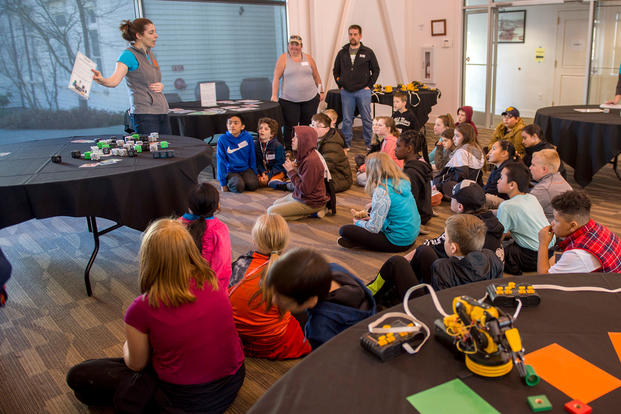Your great school search is officially on. And finding a school when you're on the move can be a challenge. If you know what to look for, though, it can get a whole lot easier.
Here's what you should look for in a new school district:
1. Responsiveness
If you've narrowed down your hunt to just a few towns or neighborhoods, your next step is to reach out to schools in that area. You can find schools in your ideal locations with a simple zip code search online. Contact information should be listed on the main school page. You can call or email, but try to get in contact with the principal, vice-principal or lead school administrative assistant.
You're looking for a school that responds within a few days at the most. The response should be warm, welcoming and answer your questions. A district or school that has good communication with you off the bat will likely continue to do so after your child is enrolled.
2. Ratings
The old saying "don't judge a book by the cover" also applies to ratings. Rankings and ratings don't always show the whole story. Even the best ranking sites, like Niche, SchoolDigger and Great Schools, are working mostly with data and less often with actual people. While they all take community reviews into account, these reviews can be out of date or very biased. Anyone can submit a review of any school at any time. Generally, you are looking for ratings above 6 or 7 (Great Schools), over 60-70% (SchoolDigger), and B or higher (Niche).
Even if a school or district has a lower rating, it doesn't mean that it's a terrible school. There are many factors that could cause lower ratings. Instead of writing off a school because of a lower score, reach out and ask about the areas that concern you most. A quality school will welcome your questions and be able to address your concerns.
3. Feeder Schools
While military families do move frequently, we can be lucky enough to stay in one spot for multiple tours. Other times children will be transitioning between elementary, middle or high school during one assignment.
When you select a school, take a look at the next level up. You'll want to know where your child will progress after their initial school. If there is a great elementary school, but the middle school isn't quite what you were hoping for, you might consider checking other districts.
Sometimes very large districts will have several elementary schools funneling into a larger middle school, and then the middle schools all feeding into one or two high schools. In these situations, you might have a little more choice about the path your child's education follows. You want to make sure that every stop on the journey meets their needs.
4. Academic Programs
Especially for students who will be entering middle and high school, it pays to check out the academics. Look for honors, AP and dual enrollment courses in high school. At all levels, check out the gifted education program.
You're looking for AP and honors courses with multiple options across all major subjects, including language and the arts. Gifted programs should be more than just advanced worksheets, and should include multiple intelligences and strategies. The dual enrollment courses should be at a reputable college or university with credits that can be transferred to another two or four-year program.
5. Special Education
If you have a child with an IEP, 504 Plan or if you suspect that you might need these services, ask the school or district for information about their special education and support services. Make sure that the school you decide on offers similar or better services than in your last district. The best way to find this out is to contact the district special education director. Outline what your child currently needs and receives. Then ask if their school can provide similar services.
If your child is currently receiving extra academic help outside of special education, ask about that as well.
6. Extracurriculars
You want a school district that has balanced after school activities. Having a stellar football or basketball team is great, but only if your child plays those sports. The same goes for any other extras, like clubs or activities.
Take into account what your child enjoys doing and try to make sure that your school will serve these needs. This is especially important for older students since extracurricular activities are a big part of college admissions packages.
7. Online presence
We are firmly in the digital age. Military families are getting a lot of gouge about duty stations, and schools, online and through social media. Savvy schools are also building their social media skills and beefing up their websites.
Look for schools with accounts across social media platforms, but one that doesn't share invasive information about their students. Student photos should be of groups or wide shots. Personally identifiable information shouldn't be shared or viewable (no visible name tags on desks, specific locations, live check-ins, student ages, etc.). But there should be a wealth of information about school or district events, PTA/PTO meetings and general academic programs or achievements.
School or district websites should be easy to navigate and pleasant to look at. If it looks like it's stuck in the 1990s or isn't frequently updated, it could be a sign that the school isn't tech-friendly.
8. Community
While you are checking the school's online presence, reach out to the PTA or PTO. Find out about their events, partnerships with local businesses, and major projects. You want to look for a parent organization that truly partners with the school, working to improve life for everyone in the district.
The ideal PTA/PTO will champion teachers, provide financial assistance with extras like field trips or sports, and work to involve more parents in the community. If you get a welcoming feel, that's awesome!
9. Happy teachers
Check out teacher websites and school-connected teacher social media profiles. Granted these professional profiles will be upbeat and positive, but teachers that are happy will post frequently and share more personal items. This shows that they are connected to the school community and don't mind sharing their personal lives with their students. Also look to see if teachers regularly share updates about their classrooms, lessons, and general student progress. These teachers are invested in this school and genuinely like their job.
Happy teachers teach happy students!
Keep Up with the Ins and Outs of Military Life
For the latest military news and tips on military family benefits and more, subscribe to Military.com and have the information you need delivered directly to your inbox.









